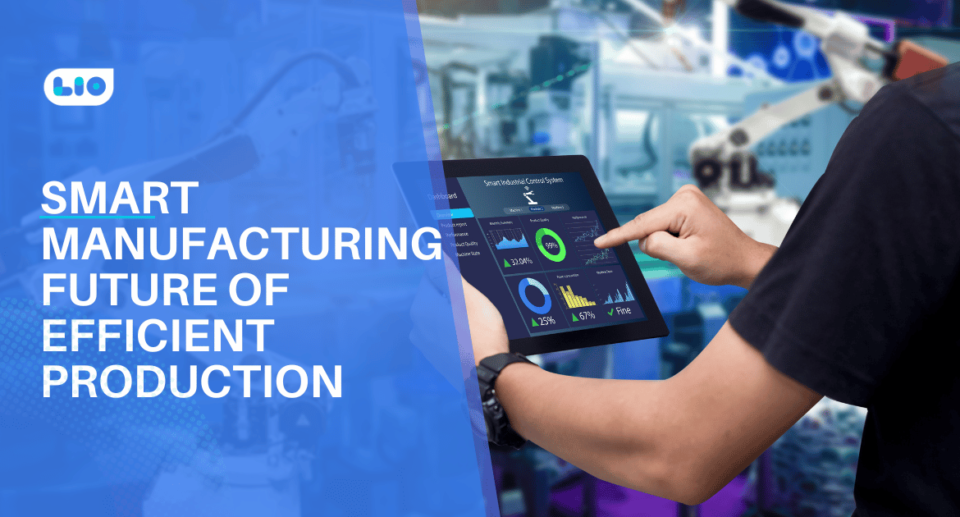Digital Manufacturing: Transforming Industry with Technology
Gaurav Singh Rawat
- June 5, 2024
- 13 Min Read
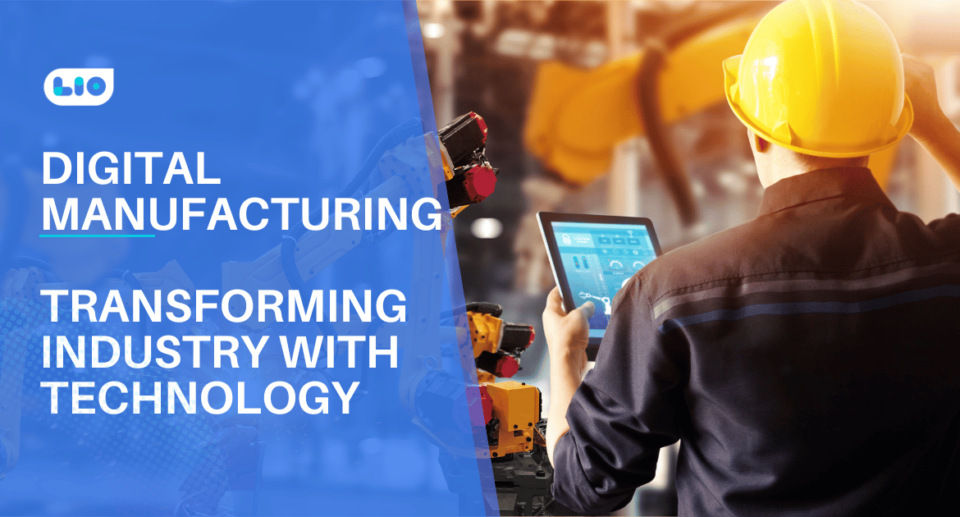
Digital manufacturing is rapidly transforming the industrial landscape, ushering in a new era of efficiency, innovation, and competitiveness. As manufacturers face increasing pressure to optimize operations, reduce costs, and meet evolving customer demands, the adoption of digital technologies has become a strategic imperative.
From the shop floor to the supply chain, digital solutions are revolutionizing every aspect of the manufacturing process, enabling companies to unlock new levels of productivity, agility, and growth.
The growing importance of digital manufacturing cannot be overstated. In today’s fast-paced, globalized economy, manufacturers must be able to quickly adapt to changing market conditions, customer requirements, and technological advancements.
Digital technologies provide the tools and capabilities needed to navigate this complex landscape, allowing manufacturers to streamline processes, improve quality control, and make data-driven decisions in real-time.
What is Digital Manufacturing?
Digital manufacturing is an integrated approach to manufacturing that uses advanced digital technologies to create a more efficient, agile, and customer-focused production process.
At its core, digital manufacturing aims to leverage the power of data, automation, and connectivity to optimize every aspect of the manufacturing lifecycle, from product design and engineering to production, quality control, and supply chain management.
The key concept behind digital manufacturing
It is the use of digital tools and systems to create a seamless flow of information across the entire manufacturing ecosystem. By digitizing processes, data, and communication, manufacturers can gain real-time visibility into their operations, enabling them to make data-driven decisions, quickly respond to changing market demands, and continuously improve their processes.
Dimensions of Digital Manufacturing
Digital manufacturing encompasses three main dimensions:
Product Lifecycle
This dimension covers the entire lifecycle of a product, from initial design and engineering to sourcing, production, and service. Digital technologies enable a more collaborative and iterative design process, allowing for virtual prototyping, simulation, and testing before physical production begins.
Throughout the lifecycle, digital data captures every revision, deviation, and execution, providing a comprehensive digital thread.
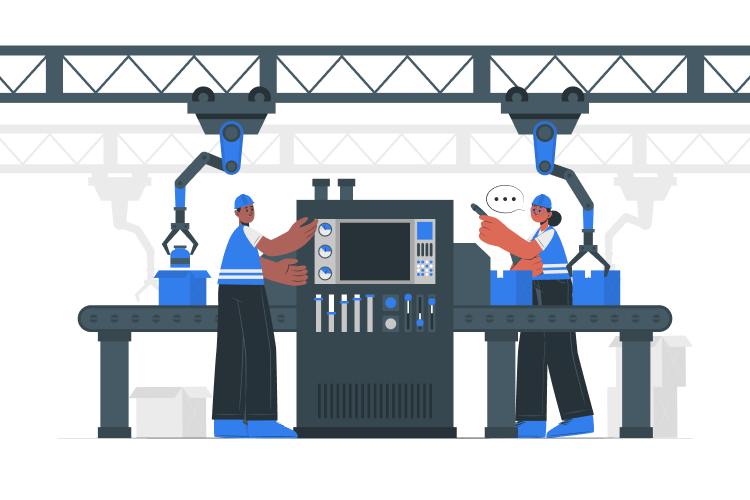
Digitize Your Manufacturing
Transform your manufacturing processes with digital technologies. Implement IoT, AI, and robotics to optimize operations, reduce costs, and improve quality.
Smart Factory
Also known as Industry 4.0, the smart factory dimension focuses on the use of advanced automation, robotics, Industrial Internet of Things (IIoT), and artificial intelligence to create a highly optimized and adaptable production environment.
Smart machines, sensors, and tools provide real-time data, enabling predictive maintenance, quality control, and continuous improvement.
Value Chain Management
This dimension aims to optimize the entire value chain, from suppliers to end customers, by leveraging digital technologies to streamline processes, reduce waste, and enhance collaboration. By digitally connecting the value chain, manufacturers can improve demand forecasting, inventory management, and logistics, ultimately leading to better customer satisfaction.
While digital manufacturing shares some similarities with related concepts like computer-integrated manufacturing (CIM) and lean manufacturing, it represents a more holistic and data-driven approach. CIM, which emerged in the 1980s, focused on automating and integrating manufacturing processes using computers but lacked the advanced analytics, connectivity, and flexibility of digital manufacturing.
Lean manufacturing, on the other hand, emphasizes waste reduction and continuous improvement, which are also key goals of digital manufacturing. However, digital manufacturing takes lean principles a step further by leveraging digital technologies to create a more responsive, adaptable, and data-driven production system.
Benefits and Advantages of Digital Manufacturing
Digital manufacturing offers numerous benefits and advantages by leveraging automation, digitized workflows, and advanced technologies. Here are some of the key benefits:
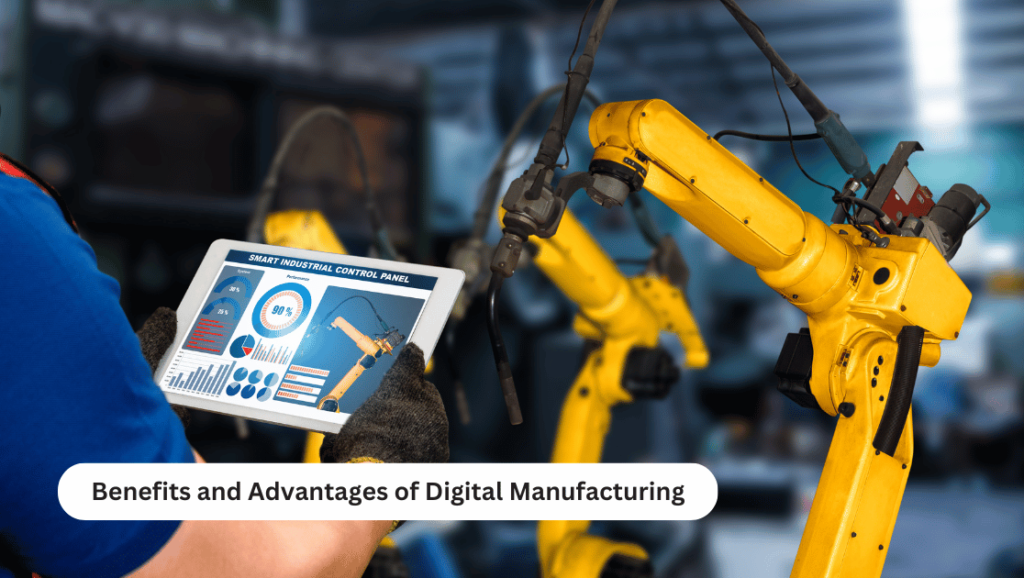
Increased Efficiency and Productivity
Digital manufacturing technologies enable manufacturers to automate and streamline production processes, resulting in faster and more efficient operations. Automated workflows eliminate manual, repetitive tasks and reduce human errors, leading to increased productivity.
Cost Reduction
By optimizing resource utilization, reducing waste, and improving efficiency through automation, digital manufacturing can significantly lower production costs. Predictive maintenance and quality control also minimize downtime and rework, further reducing expenses.
Improved Quality Control
Automated systems with sensors and real-time analytics allow for continuous monitoring and optimization of quality. Issues can be detected and corrected early in the production process, resulting in fewer defects and higher product quality.
Enhanced Flexibility and Agility
Digital manufacturing enables manufacturers to quickly adapt to changing market demands, customize products, and introduce new offerings. Flexible, automated production lines and rapid prototyping capabilities make it easier to respond to customer needs and accommodate design changes in real-time.
Faster Time-to-Market
Digital tools accelerate product development by enabling virtual design, simulation, and testing. Automated workflows and data sharing also foster innovation across the value chain, reducing time-to-market for new products.
Supply Chain Optimization
Automation and digital technologies improve visibility, coordination, and decision-making across the supply chain. Real-time data sharing, predictive analytics, and automated processes help optimize inventory, logistics, and supplier relationships.

Optimize Your Supply Chain
Digitalize your supply chain management with digital manufacturing solutions. Enable end-to-end visibility, optimize inventory, and respond quickly to market demands.
Improved Decision-Making
Digital manufacturing provides real-time data and insights into every aspect of the production process. This enables data-driven decision making, allowing manufacturers to identify bottlenecks, optimize operations, and continuously improve processes.
Enhanced Collaboration
Digital workflows enable seamless collaboration across teams, departments, and external partners. Centralized data access and automated information sharing improve communication, accelerate problem-solving, and foster innovation.
Increased Sustainability
Automation and optimization in digital manufacturing help minimize material waste, optimize energy consumption, and enable more sustainable production practices. Data-driven insights support eco-efficiency and sustainable decision-making.
Skilled Workforce Development
Digital transformation creates opportunities for upskilling the workforce. Employees can develop expertise in advanced technologies, automation, and data analysis, boosting productivity and job satisfaction.
By leveraging these benefits, manufacturers can gain a competitive edge, drive operational excellence, and position themselves for long-term success in the digital age. However, realizing these advantages requires strategic planning, investment in the right technologies, and a commitment to continuous improvement and workforce development.
Key Technologies Enabling Digital Manufacturing
Several cutting-edge technologies are driving the digital transformation of manufacturing, enabling smarter, more efficient, and more agile production processes.
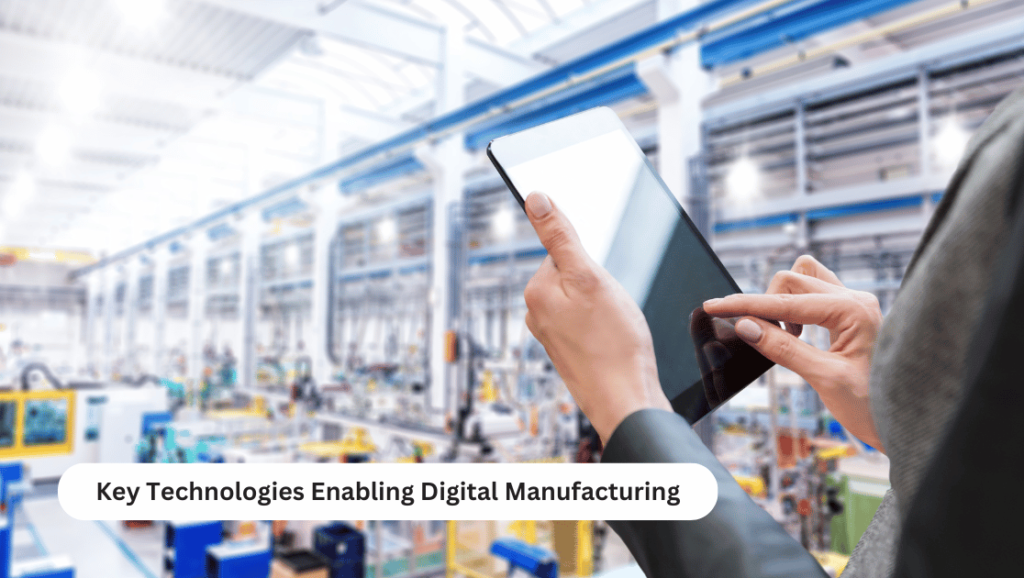
Internet of Things (IIoT) and smart sensors
The Industrial Internet of Things (IIoT) and smart sensors form the foundation of digital manufacturing. IIoT involves connecting machines, devices, and sensors on the factory floor to collect real-time data for monitoring and optimization. Smart sensors with integrated computing functions transmit asset data wirelessly to central systems for round-the-clock visibility.
Big data analytics and artificial intelligence
They are critical for extracting insights from the vast amounts of data generated by IIoT devices. Machine learning algorithms can spot patterns and anomalies to enable predictive maintenance, quality control, and process optimization. AI enhances the speed and accuracy of data analysis to support better decision-making.
Cloud computing
It provides the scalable infrastructure and computing power needed for storing and analyzing industrial big data. The cloud enables remote access to data and applications from anywhere, facilitating collaboration and data sharing across the value chain.
Advanced robotics and automation
Advanced robotics and automation, such as autonomous mobile robots and collaborative robots, are transforming production and logistics processes. These intelligent systems can adapt to changes, make decisions, and work safely alongside humans to improve productivity and flexibility.

Automate with Robotics
Integrate advanced robotics into your digital manufacturing processes. Deploy collaborative robots and automated systems to increase productivity and flexibility.
Digital twins and simulation
They allow manufacturers to create virtual replicas of products, processes, and entire factories. By designing, testing, and optimizing in the virtual world first, companies can reduce development time, costs, and risks.
Additive manufacturing (3D printing)
It enables rapid prototyping, tooling, and production of complex, customized parts. This technology reduces waste, inventory, and time-to-market while enabling new design possibilities.
Augmented and virtual reality
They enhance worker training, guidance, and remote collaboration. AR can provide real-time instructions and overlay digital information onto the physical world, while VR enables immersive design and simulation experiences.
Challenges and Considerations in Digital Manufacturing
Despite the immense potential of digital manufacturing technologies, several challenges and considerations must be addressed for successful implementation.
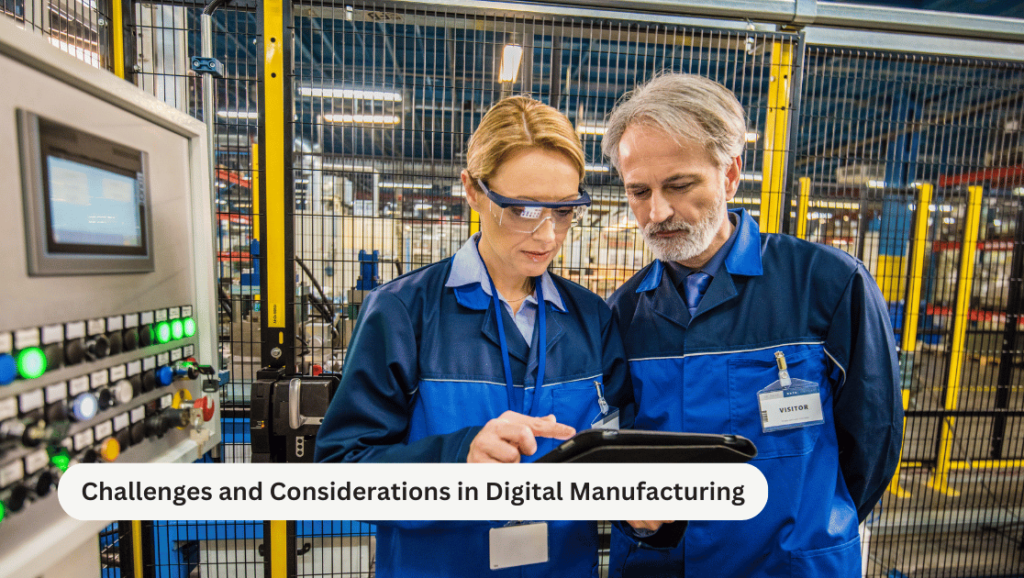
High initial investment costs
It can be a barrier for many companies, especially small and medium-sized enterprises. The expense of acquiring and integrating new technologies, upgrading infrastructure, and training employees can be substantial.
Skilled Workforce
The need for a skilled workforce is critical as digital manufacturing requires new competencies in areas like data analytics, robotics programming, and cybersecurity. Upskilling current employees and attracting new talent with the right skills is essential but can be challenging.
Integrating legacy systems
Integrating legacy systems with new digital technologies is another hurdle. Many manufacturing plants have decades-old equipment that was not designed for connectivity. Retrofitting or replacing these systems can be complex and costly.
Cybersecurity and data privacy risks
As more devices and systems are connected, cybersecurity and data privacy risks increase. Protecting sensitive data, intellectual property, and production systems from cyber threats requires robust security measures and governance.
Change management and cultural transformation
They are also significant challenges. Adopting digital manufacturing often requires rethinking processes, roles, and ways of working. Overcoming organizational inertia and fostering a culture of innovation and continuous improvement is key.

Redefine Manufacturing Possibilities
Our platform equips you with the tools to streamline your project lead management, collaborate seamlessly, and push the boundaries of design. Embrace innovation with Lio today.
Real-World Examples and Case Studies
Many companies across industries are already reaping the benefits of digital manufacturing technologies. Here are a few notable examples:
Boeing has used virtual design and simulation to reduce time-to-market for new aircraft by 50%. Digital twins allow Boeing to test and optimize designs virtually before physical prototyping, saving time and costs.
Automotive manufacturers like BMW and Audi are using big data analytics to optimize their supply chains. By analyzing data from suppliers, logistics providers, and production systems, they can predict demand, reduce inventory, and improve on-time delivery.
Additive manufacturing is being applied in diverse industries from food to healthcare to construction. For example, 3D printing is being used to create personalized medical implants, on-demand spare parts, and even entire buildings.
Future Outlook and Trends
Looking ahead, the future of digital manufacturing looks bright, with several key trends shaping the industry.
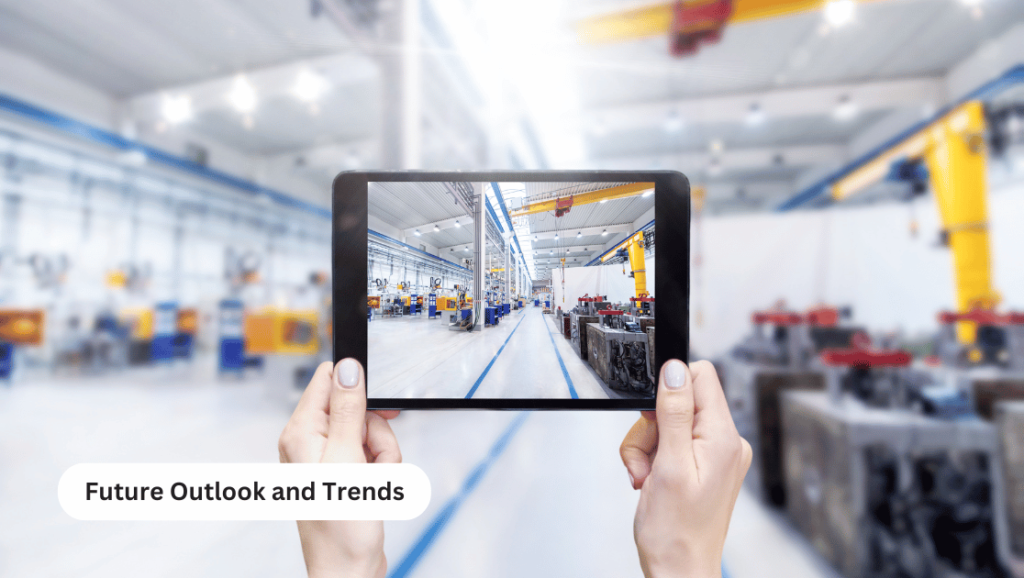
Integration of Industry 4.0 technologies
The continued integration of Industry 4.0 technologies like IIoT, AI, robotics, and additive manufacturing will drive further optimization and automation of production processes. As these technologies mature and become more affordable, adoption will accelerate.
Industrial metaverse
The emergence of the industrial metaverse, a virtual world that mirrors and simulates the physical factory, will enable new levels of collaboration, training, and innovation. Companies will increasingly use digital twins and VR/AR to design, test, and operate factories virtually.
Sustainability and green manufacturing
It will be a major focus as companies strive to reduce their environmental impact. Digital technologies will play a key role in optimizing resource use, minimizing waste, and enabling circular economy practices.
Artificial intelligence and generative AI
The potential of artificial intelligence and generative AI will continue to grow. AI will increasingly be used to optimize complex systems, automate decision-making, and even design new products and processes autonomously.
This opens the door for businesses to leverage generative AI services to unlock new opportunities. These services provide specialized tools and platforms that enable companies to harness the creative and problem-solving capabilities of generative AI.
As digital manufacturing evolves, companies that embrace these technologies and trends will be well-positioned to thrive in the future of industry. However, realizing the full potential of digital manufacturing will require significant investments, workforce development, and a culture of continuous innovation and improvement.
Conclusion
Digital manufacturing is transforming the industrial landscape, enabling companies to optimize operations, drive innovation, and remain competitive in an increasingly dynamic market. By leveraging advanced technologies such as the Industrial Internet of Things, artificial intelligence, robotics, and additive manufacturing, manufacturers can streamline processes, reduce costs, and improve product quality.
However, the journey towards digital transformation is not without challenges. High initial investment costs, the need for skilled workforce training, cybersecurity risks, and change management hurdles must be addressed for successful implementation. Real-world examples from companies like Boeing, automotive manufacturers, and those in the food, medical, and construction industries demonstrate the tangible benefits of embracing digital manufacturing.
As Industry 4.0 technologies continue to evolve, the future of digital manufacturing looks promising. The growth of the industrial metaverse, emphasis on sustainability, and the potential of generative AI will shape the industry in the coming years. Manufacturers that strategically invest in digital technologies, foster a culture of innovation, and continuously upskill their workforce will be well-positioned to thrive in the era of smart manufacturing.
Frequently Asked Questions (FAQs)
What role does cybersecurity play in digital manufacturing?
Cybersecurity is critical in digital manufacturing to protect intellectual property, sensitive data, and connected systems from cyber threats. As factories become more digitized and networked, the risk of cyberattacks increases.
Robust cybersecurity measures such as network segmentation, encryption, access controls, and continuous monitoring are essential to safeguard digital manufacturing operations from breaches, data theft, and disruption.
How does digital manufacturing enable mass customization?
Digital manufacturing technologies like 3D printing, robotics, and software-defined production lines enable cost-effective mass customization.
Instead of mass producing identical products, manufacturers can use digital tools to efficiently produce customized products in smaller batches based on individual customer preferences. Digital workflows allow for rapid design changes and automated production reconfigurations, making it economical to manufacture highly personalized products at scale.
What are digital threads and how are they used in manufacturing?
A digital thread is a communication framework that connects data flows and produces a holistic view of an asset’s data across its product lifecycle. It links every phase of a product from design, production, and use to servicing.
In manufacturing, digital threads enable real-time data sharing, traceability, and collaboration across the value chain. They allow design changes to be propagated instantly to production, quality issues to be traced to root causes, and product performance data to inform future designs.
How can small and medium-sized manufacturers adopt digital technologies?
Small and medium-sized manufacturers can start their digital transformation by identifying key pain points and opportunities in their operations. Focusing on high-impact use cases, they can pilot digital solutions on a small scale before scaling up.
Leveraging cloud technologies, partnering with technology providers, and tapping into government and industry support programs can help SMMs overcome resource constraints. Upskilling the workforce and fostering a digital culture are also critical for successful adoption.
What is the role of edge computing in digital manufacturing?
Edge computing brings data processing and analysis closer to the source of data generation, such as machines and sensors on the factory floor. By processing data at the edge, manufacturers can reduce latency, improve real-time decision making, and optimize bandwidth usage.
Edge computing enables use cases such as real-time quality control, predictive maintenance, and autonomous robotics that require low-latency processing of large volumes of data generated by manufacturing assets.

